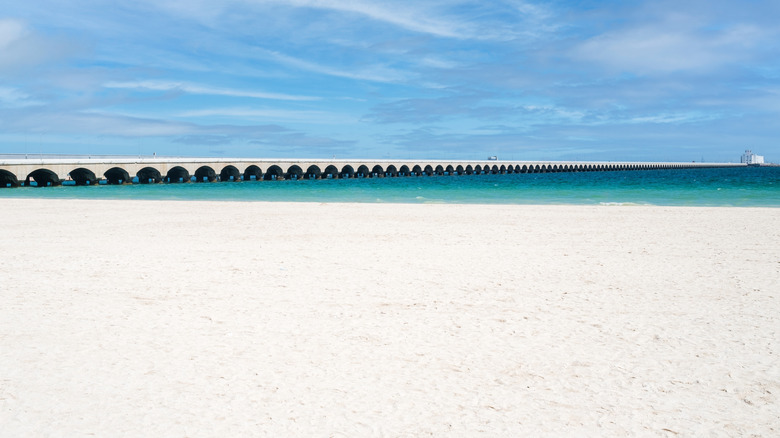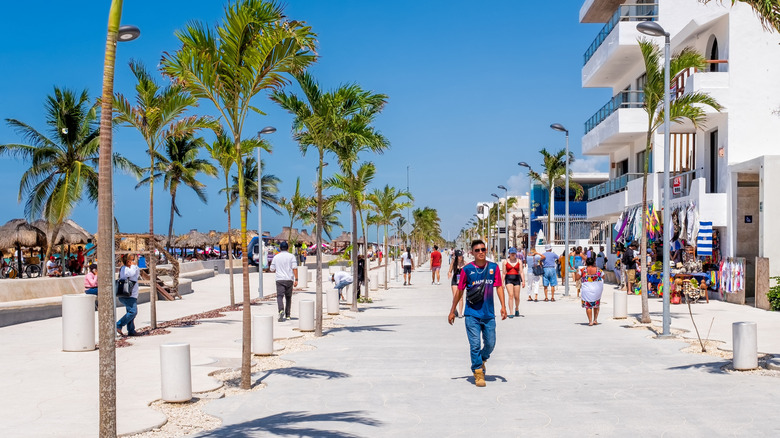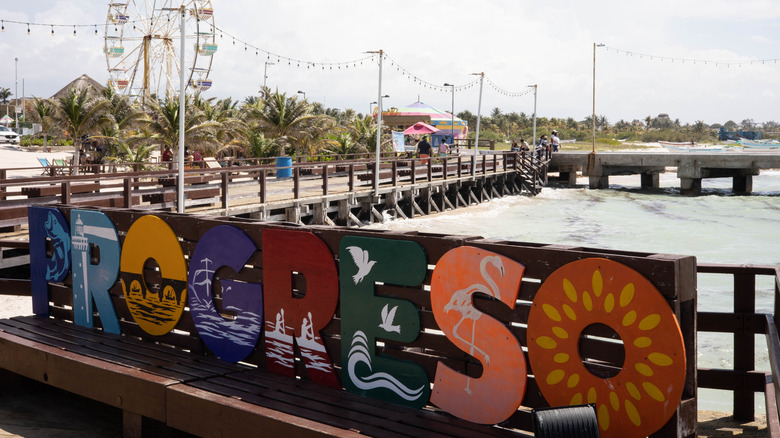The World's Longest Pier Is In A Gulf Of Mexico Port City Full Of Pristine Beaches
Mexico has so many beaches that it seems almost impossible to choose which one is best for your vacation. Do you decide on a destination with fabulous cuisine? Ancient ruins? Clear blue water and exciting aquatic activities? Well, why not a combination of all three? On the Gulf of Mexico sits a Mexican town with endless options for summer fun and exploration. Progreso, located in the state of Yucatan, offers visitors the chance to sit back and relax on pristine white sandy beaches, try their hand at windsurfing, explore Mayan ruins (like the ones at Chichen Itza or Uxmal), swim in one of the Yucatans many cenotes (like the network in Cuzama), or even see flamingos at the pink lake of Las Coloradas.
One of the many draws of Progreso is its easy accessibility. Located about a 40-50 minute drive from the colorful town of Merida, Yucatan's capital, Progreso is a convenient stop for day-trippers and those looking to stay awhile to enjoy much-needed sunshine. Interestingly, this port town is also known for having the longest pier in the world. At 4 miles long, it is often a major stop on many cruise ship routes.
Most of the length of the Puerto de Altura is not open to the public, unless disembarking from a ship docked to it, however, the nearby Chocolate Pier offers a great vantage point. The pier and its location are known not only as an access point for travelers to explore the Yucatan, but also as an important location for the distribution of trade items. No matter how you choose to spend your time, Progreso makes for a great budget-friendly focal or jumping-off point for exploration.
Enjoy a day in the sun at Progreso Beach
Of course, if you're headed to Progreso, your plan is probably to chill on the beach. Luckily, Progreso offers miles of pristine white beaches perfect for relaxing. While beach access is free, if you're looking for more luxury, many beach clubs offer day passes that include food, drinks, umbrellas, and access to pools and water sports equipment.
From the beach, visitors can also take a stroll along the Malecon, or the boardwalk, and enjoy many of the different restaurants, shop for souvenirs, or enjoy a refreshing michelada. There is also a small meteorite museum that explores the history of evolution and extinction and the impact of the Chixculab meteorite on the region millions of years ago. Those looking for a day out on the sea can rent a boat for sport fishing, typically accompanied by an expert fisherman — and catch fish like dorado, sailfish, and grouper.
If you have a car, you can also access other beaches outside of Progreso, such as Yucalpeten, Chelem, Chuburna, Isla Columpios, Chicxulub Puerto, Telchac Puerto, and San Crisanto. From Progreso, tourists have access to many different day trips as well — and tours are available to join if you do not have access to a car. Those looking to explore more nature should head to El Corchito Ecological Reserve — a fantastic spot only about a 5-minute drive from downtown Progreso, which offers visitors the chance to see wildlife, swim in cenotes, and kayak through mangroves. For a taste of history, Xcambo is a small but interesting Mayan archaeological site located nearby (about a 20-minute drive) to Progreso — and about 30 minutes from Progreso sits the Dzibilchaltun Mayan Ruins, which also includes a nearby cenote for swimming.
Getting to Progreso
As mentioned, Progreso is an incredibly popular cruise destination in Mexico — therefore, cruise ship is one way to access this beautiful area. If you are not part of the cruise ship crew and want to avoid the crowds, check the ship schedule beforehand. The closest airport to Progreso is Manuel Crescencio Rejon International Airport (also known as the Merida Airport), which offers domestic and international flights. You can take a taxi from here straight to Progreso, or there is a frequent bus service from Merida's city center to Progreso via Auto Progreso. Buses depart from the station in Merida, located on Calle 62 between Calle 65 and 67. The bus station is less than a 10-minute walk from the main square in town and is labelled as Auto Progeso on Google Maps.
If you don't want to take a bus, colectivos, also known as shared transport vans, are available from Merida to Progreso. The pickup area for these is located near Auto Progreso on Calle 60, and the ride takes around 30 minutes and costs about 20-40 pesos each way. You can also call a cab or take an Uber. Be sure to bring cash with you, as most of the time transport services only accept this form of payment.
The best time of year to visit Progreso depends on whether you can handle the heat or rain. Due to the location of the area, it sees a more tropical climate and warm temperatures year-round. The best time to visit is November through April, when the weather is milder due to lower temperatures and less humidity. The rain and hurricane season typically runs from June to November, with the highest risk of storms from August to October.


